Ansible 常用模块
Ansible
介绍
Ansible是一个基于Python开发的配置管理和应用部署工具,现在也在自动化管理领域大放异彩。它融合了众多老牌运维工具的优点,Pubbet和Saltstack能实现的功能,Ansible基本上都可以实现。 Ansible能批量配置、部署、管理上千台主机。比如以前需要切换到每个主机上执行的一或多个操作,使用Ansible只需在固定的一台Ansible控制节点上去完成所有主机的操作。 Ansible是基于模块工作的,它只是提供了一种运行框架,它本身没有完成任务的能力,真正执行操作的是Ansible的模块, 比如copy模块用于拷贝文件到远程主机上,service模块用于管理服务的启动、停止、重启等。 Ansible其中一个比较鲜明的特性是Agentless,即无Agent的存在,它就像普通命令一样,并非C/S软件,也只需在某个作为控制节点的主机上安装一次Ansible即可,通常它基于ssh连接来控制远程主机,远程主机上不需要安装Ansible或其它额外的服务。 使用者在使用时,在服务器终端输入命令或者playbooks,会通过预定好的规则将playbook拆解为play,再组织成ansible可以识别的任务,调用模块和插件,根据主机清单通过SSH将临时文件发给远程的客户端执行并返回结果,执行结束后自动删除 Ansible的另一个比较鲜明的特性是它的绝大多数模块都具备幂等性(idempotence)。所谓幂等性,指的是无论执行多少次同样的运算,结果都是相同的,即一条命令,任意多次执行所产生的影响均与一次执行的影响相同。比如执行 systemctl stop xxx 命令来停止服务,当发现要停止的目标服务已经处于停止状态,它什么也不会做, 所以多次停止的结果仍然是停止,不会改变结果,它是幂等的,而 systemctl restart xxx 是非幂等的。 Ansible的很多模块在执行时都会先判断目标节点是否要执行任务,所以,可以放心大胆地让Ansible去执行任务,重复执行某个任务绝大多数时候不会产生任何副作用。




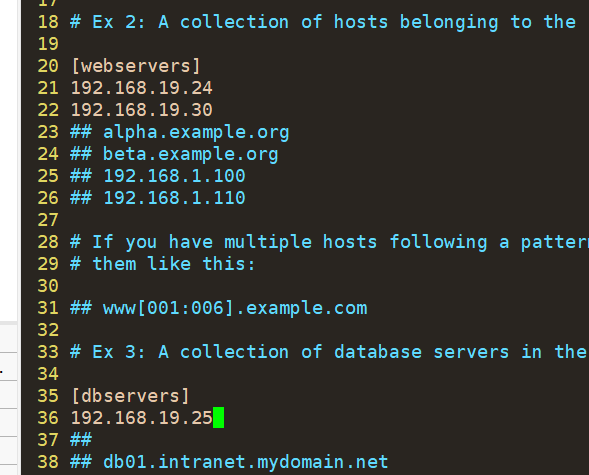
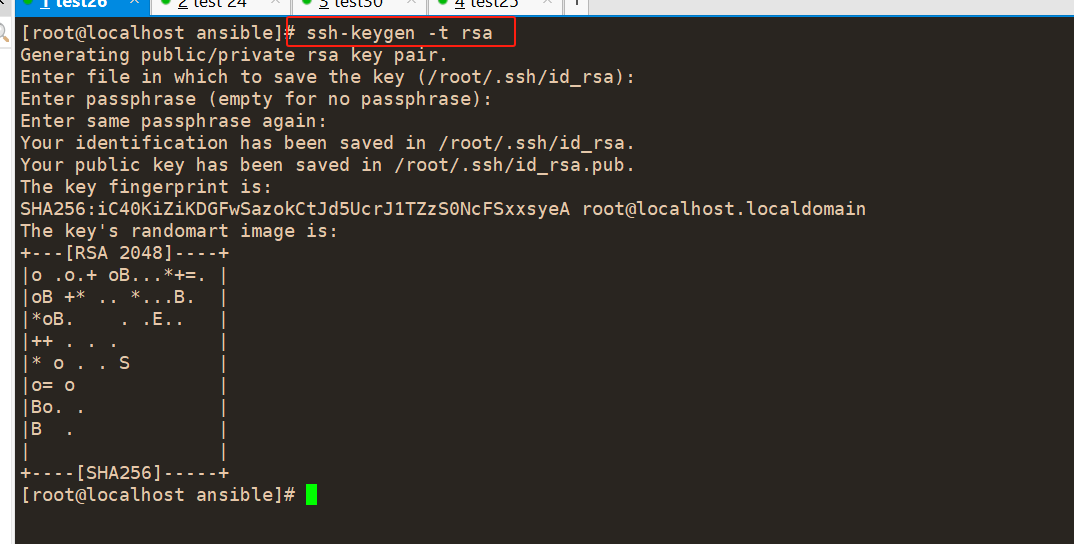
#密钥
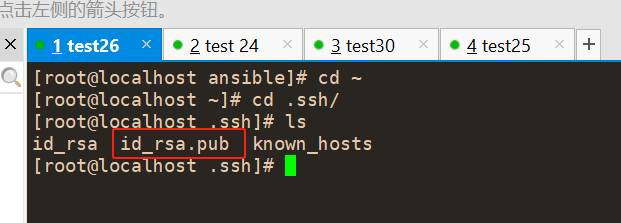

#做免密
sshpass -p '123' ssh-copy-id -o StrictHostKeyChecking=no root@192.168.19.25

#支持3387个模块
COMMAND模块
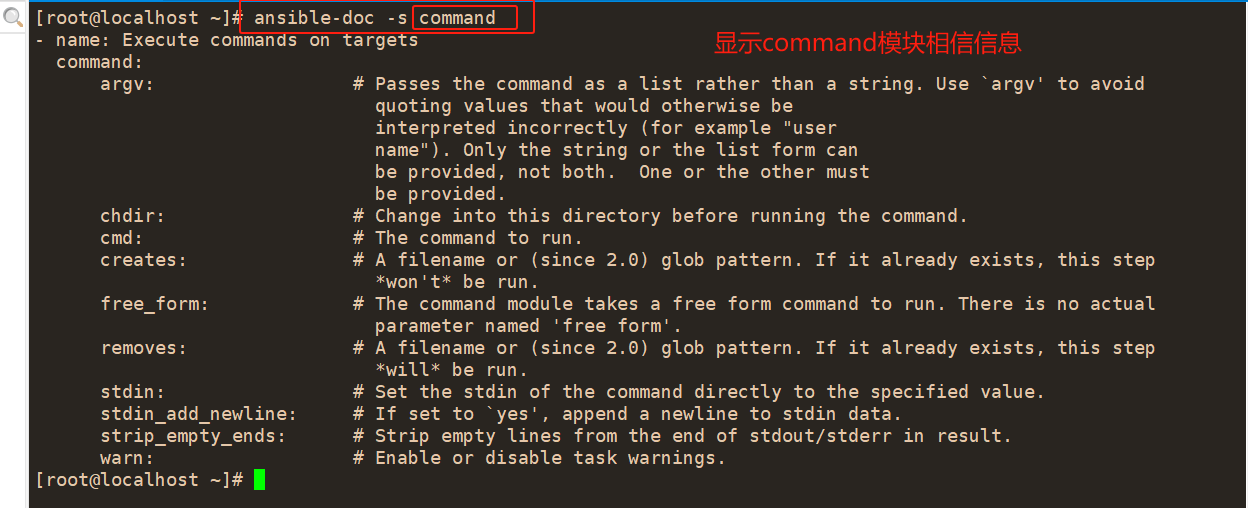








SHELL 模块


ansible dbservers -m shell -a 'ifconfig ens33 | awk "MR==2{print}"'

ansible dbservers -m shell -a 'echo $(ifconfig ens33 | awk "NR==2 {print $2}") | cut -d " " -f2'


shell支持 | 和重定向
CRON模块

ansible dbservers -m cron -a 'minute=30 hour=2 weekday=2 job="/bin/cp -f /var/log/messages /opt" name="backup syslog"'

#dbservers 生成计划任务

ansible dbservers -m cron -a 'name="backup syslog" state=absent'


ansible dbservers -m cron -a 'name="cp syslog" job="/bin/cp -f /var/log/messages /opt/" minute=10 hour="10,22" day=10 month="*/2"'


#删除
ansible dbservers -m cron -a 'name="cp syslog" state=absent'

USER模块
常用的参数: name:用户名,必选参数 state=present|absent:创建账号或者删除账号,present表示创建,absent表示删除 system=yes|no:是否为系统账号 uid:用户uid group:用户基本组 groups: 用户所属附加组 shell:默认使用的shell create_home=yse|no: 是否创建家目录 password:用户的密码,建议使用加密后的字符串 remove=yes|no:当state=absent时,是否删除用户的家目录

ansible dbservers -m user -a 'name=zhangsan uid=9527 groups=wheel'


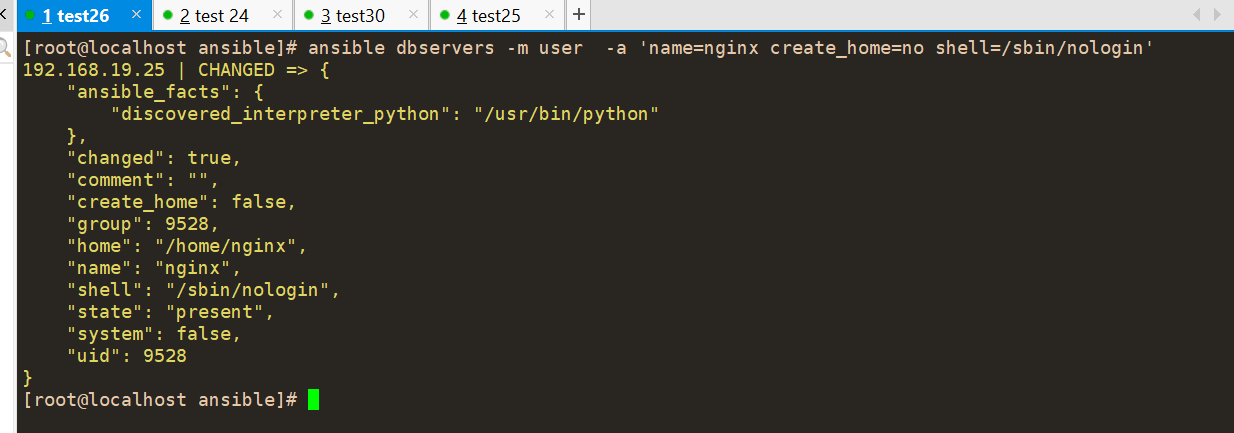
ansible dbservers -m user -a 'name=nginx create_home=no shell=/sbin/nologin'


#删除nginx用户


ansible dbservers -m user -a 'name=liqiye password=abcabc123'


#密码显示春来不安全,加密

ansible dbservers -m shell -a 'echo abcabc123 | passwd --stdin liqiye'

#密码以加密

#创建的用户都有家目录,删除只能删除用户,而家目录的用户还在

ansible]# ansible dbservers -m user -a 'name=liqiye state=absent remove=yes'


#liqiye用户及家目录已删除
group 模块
用户组管理的模块
ansible-doc -s group

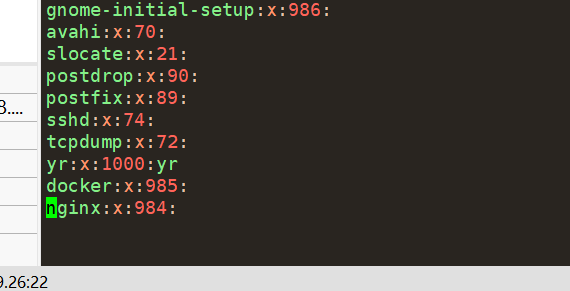

ansible dbservers -m group -a 'name=yyq gid=1314'


ansible dbservers -m group -a 'name=mysql gid=306 system=yes' #创建mysql组 ansible dbservers -a 'tail /etc/group' ansible dbservers -m user -a 'name=test01 uid=306 system=yes group=mysql' #将test01用户添加到mysql组中 ansible dbservers -a 'tail /etc/passwd' ansible dbservers -a 'id test01'
copy 模块
用于复制指定主机文件到远程主机的
ansible-doc -s copy
常用的参数:
dest:指出复制文件的目标及位置,使用绝对路径,如果源是目录,指目标也要是目录,如果目标文件已经存在会覆盖原有的内容
src:指出源文件的路径,可以使用相对路径或绝对路径,支持直接指定目录,如果源是目录则目标也要是目录
mode:指出复制时,目标文件的权限
owner:指出复制时,目标文件的属主
group:指出复制时,目标文件的属组
content:指出复制到目标主机上的内容,不能与src一起使用

ansible dbservers -m copy -a 'src=/etc/passwd dest=/opt/passwd.txt'




#创建个用户

ansible dbservers -m copy -a 'src=123.txt dest=/opt/passwd.txt mode=777 owner=liqiye group=yyq'


ansible dbservers -m copy -a 'src=/etc/yum.repos.d dest=/opt/rh'



#将目录下内容跟复制下来

#将helloworld写入/opt/hello.txt文件中
ansible dbservers -m copy -a 'content="helloworld" dest=/opt/hello.txt'


file 模块
设置文件属性
ansible-doc -s file
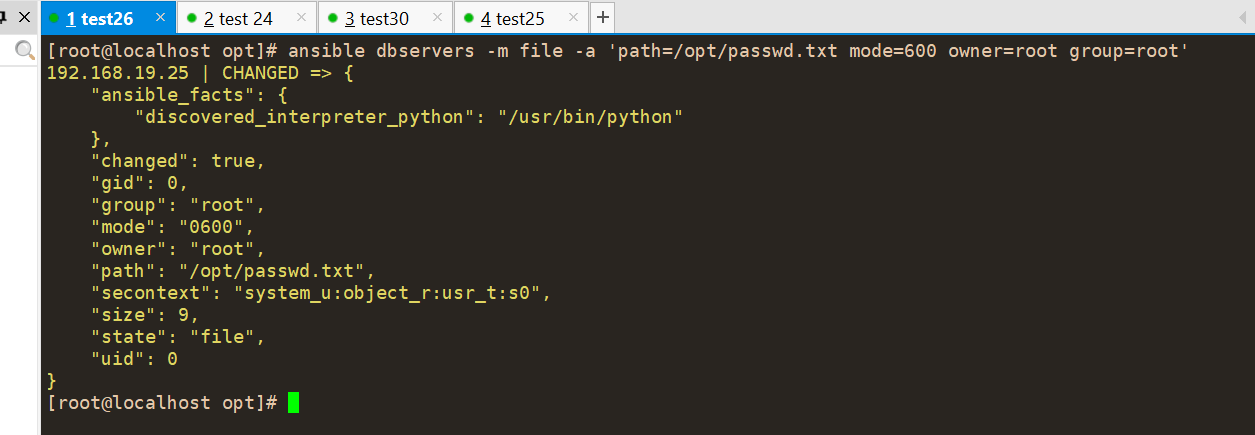
#修改文件的属主属组权限等
ansible dbservers -m file -a 'path=/opt/passwd.txt mode=600 owner=root group=root'

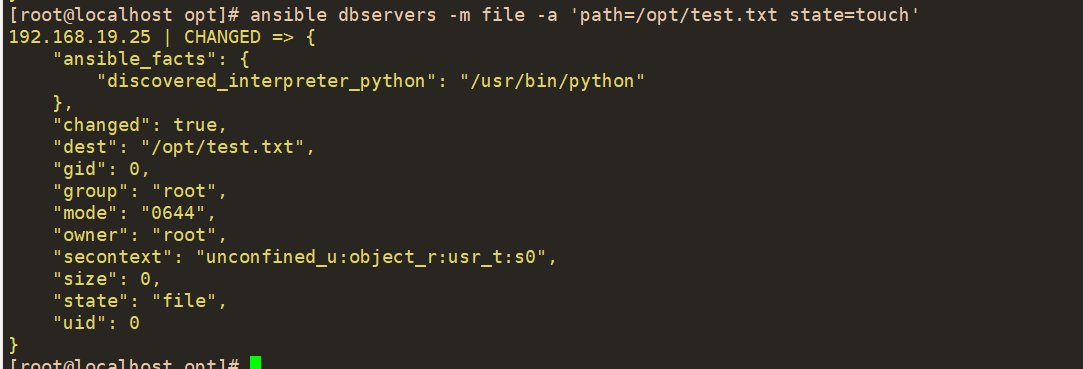
#创建个tetst.txt文件
ansible dbservers -m file -a 'path=/opt/test.txt state=touch'


#创建cxk文件夹
ansible dbservers -m file -a 'path=/opt/cxk state=directory'



#删除cxk文件夹

#软连接
ansible dbservers -m file -a 'src=/opt/hello.txt path=//root/hellowodld state=link'

hostname 模块
用于管理远程主机上的主机名

#修改主机名
ansible dbservers -m hostname -a 'name=ansible-agent03'

PING模块
检测远程主机的连通性

yum 模块
在远程主机上安装与卸载软件包
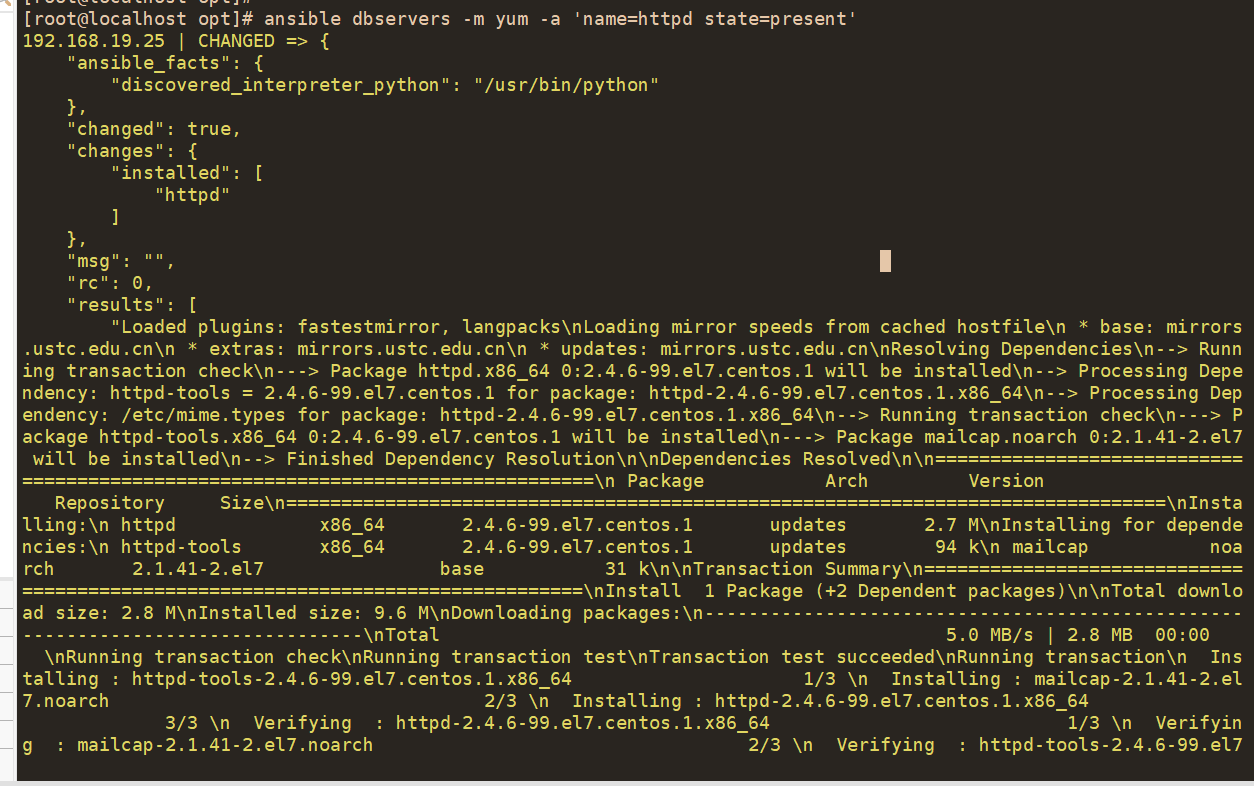
ansible dbservers -m yum -a 'name=httpd state=present'

ansible webservers -m yum -a 'name=httpd state=absent' #卸载服务
service/systemd 模块
用于管理远程主机上的管理服务的运行状态
常用的参数: name:被管理的服务名称 state=started|stopped|restarted:动作包含启动关闭或者重启 enabled=yes|no:表示是否设置该服务开机自启 runlevel:如果设定了enabled开机自启去,则要定义在哪些运行目标下自启动
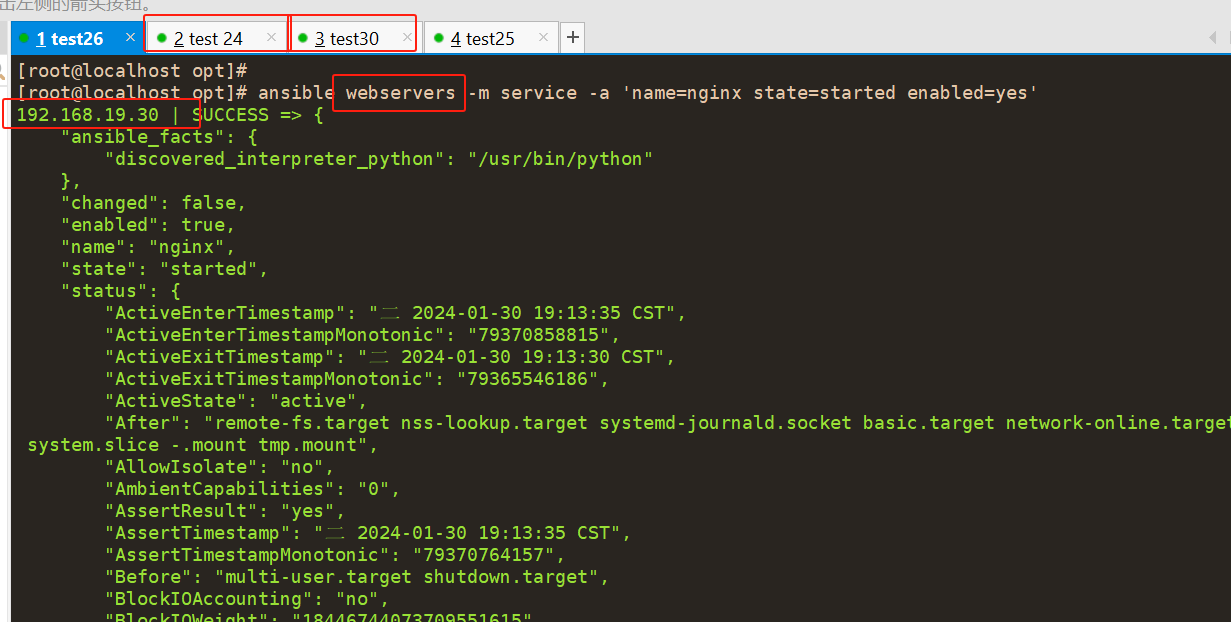
ansible webservers -m service -a 'name=nginx state=started enabled=yes'

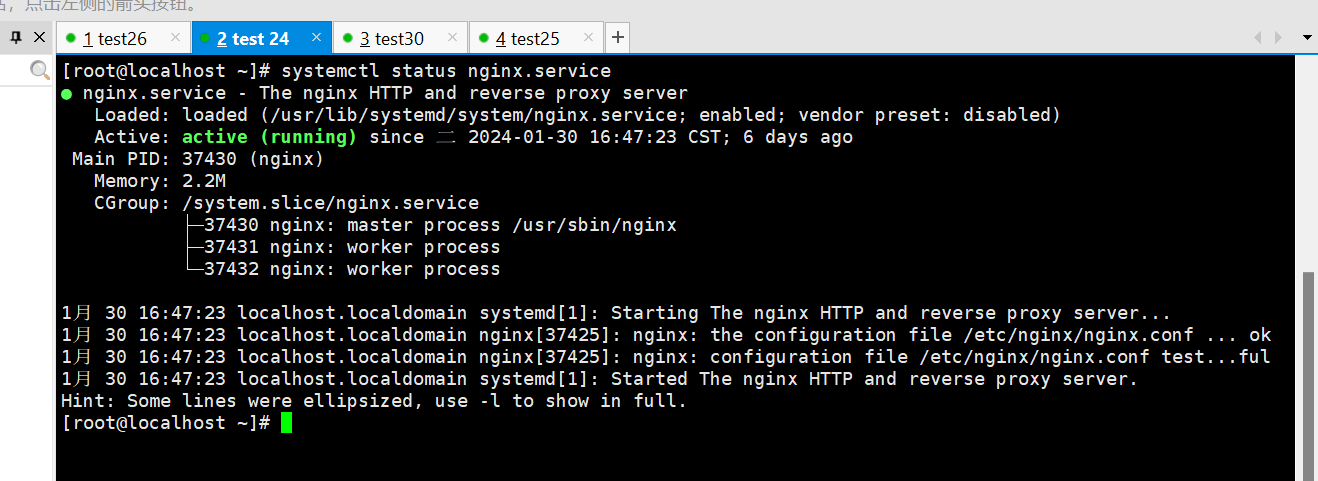




#防火墙开着的


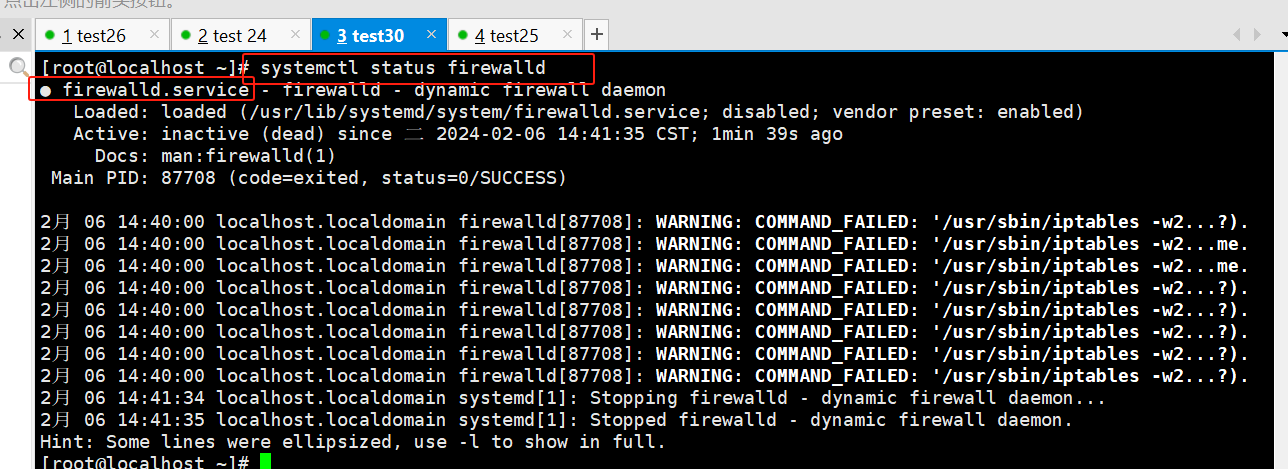
script 模块
实现远程批量运行本地的 shell 脚本



ansible webservers -m script -a 'test.sh'


1 #!/bin/bash
2
3 MYNAME=$1
4 MYLIKE=$2
5 MYFILE=$3
6
7 echo "$MYNAME like $MYLIKE" > /opt/$MYFILE

ansible webservers -m script -a 'test.sh 徐导 美女 xd-girl.txt'

mount 模块
挂载文件系统
ansible-doc -s mount
常用的参数:
src:定义挂载设备的路径
path:定义挂载到哪个目录,必须指定
fstype:指定挂载文件的系统类型,必须指定,xfs、iso9660、nfs...
opts:定义挂载的参数,defaults、rw、ro...
state:定义挂载的状态,mounted(进行挂载,修改/etc/fstab信息)、absent(永久性卸载,并修改 /etc/fstab信息)、unmounted(临时卸载,不修改/etc/fstab信息)

#添加块硬盘
alias scan='echo "- - -" > /sys/class/scsi_host/host0/scan;echo "- - -" > /sys/class/scsi_host/host1/scan;echo "- - -" > /sys/class/scsi_host/host2/scan'

ansible dbservers -m file -a 'path=/data state=directory'

ansible dbservers -m mount -a 'src=/dev/sr0 path=/mnt state=mounted fstype=iso9660'


#解挂载
ansible dbservers -m mount -a 'src=/dev/sr0 path=/mnt state=unmounted'

ansible dbservers -m mount -a 'path=/data state=absent' #永久解挂
archive 模块
打包压缩
常用的参数: path: 必须参数,远程主机上需要被打包压缩的源文件/目录 dest: 打包压缩后的包文件路径(包文件的父目录必须存在);如果包文件已存在,则会被覆盖 format: 指定压缩类型,包括: bz2、gz(默认)、tar、xz、zip remove=yes|no: 是否删除源文件

ansible dbservers -m archive -a "path=/opt/123.txt,/opt/hello.txt dest=/opt/ky33.tar.gz format=gz remove=yes"


ansible dbservers -m archive -a "path=/etc/yum.repos.d/ dest=/opt/repo.zip format=zip"
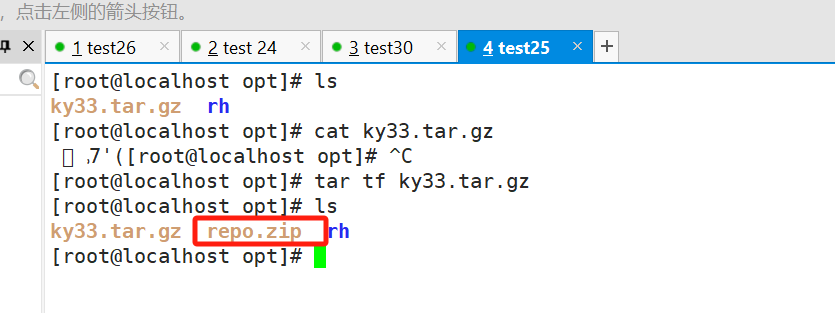
unarchive 模块
解包解压缩
常用的参数: copy:默认为 copy=yes ,拷贝的文件从 ansible 主机复制到远程主机,copy=no 表示在远程主机上寻找源文件解压 src:tar包源路径,可以是 ansible 主机上的路径,也可以是远程主机上的路径,如果是远程主机上的路径,则需设置 copy=no dest:解压后文件的目标绝对路径 remote_src: 和 copy 功能一样且互斥,设置 remote_src=yes 表示文件在远程主机上,设置为 remote_src=no 表示文件在 ansible 主机上

将 ansible 主机的压缩文件拷贝到到远程主机并解压,修改文件所属组和用户
ansible dbservers -m unarchive -a "src=/opt/nginx-1.24.0.tar.gz dest=/root copy=yes"
或
ansible dbservers -m unarchive -a "src=/opt/nginx-1.24.0.tar.gz dest=/root copy=yes"


#在远程主机解包
ansible dbservers -m unarchive -a "src=/opt/repo.tar.gz dest=/opt copy=no"
或
ansible dbservers -m unarchive -a "src=/opt/repo.tar.gz dest=/opt remote_src=yes"

replace 模块
类似于sed命令,主要也是基于正则进行匹配和替换
常用的参数: path:必须参数,指定要修改的文件 regexp:必须参数,指定一个正则表达式 replace:替换regexp参数匹配到的字符串 backup=yes|no: 修改源文件前创建一个包含时间戳信息的备份文件 before:如果指定,则仅替换/删除此匹配之前的内容,可以和after参数结合使用 after:如果指定,则仅替换/删除此匹配之后的内容,可以和before参数结合使用 owner:修改文件用户名 group:修改文件组名 mode:修改文件权限

#最开始的替换



#所有2替换成two
ansible dbservers -m replace -a 'path=/opt/test.txt regexp='2' replace=two'


ansible dbservers -m replace -a "path=/opt/test.txt regexp='^(.*)' replace='#\1'"


ansible dbservers -m replace -a "path=/opt/test.txt regexp='^#(1.*)' replace='\1'"


#恢复原样

ansible dbservers -m replace -a "path=/opt/test.txt regexp='^(a.*)' replace='#\1'"


#中间加个4

ansible dbservers -m replace -a "path=/opt/test.txt regexp='4' replace=four after=cc before=ee"


ansible dbservers -m replace -a "path=/opt/test.txt regexp='4' replace=four after=cc before=ee backup=yes"
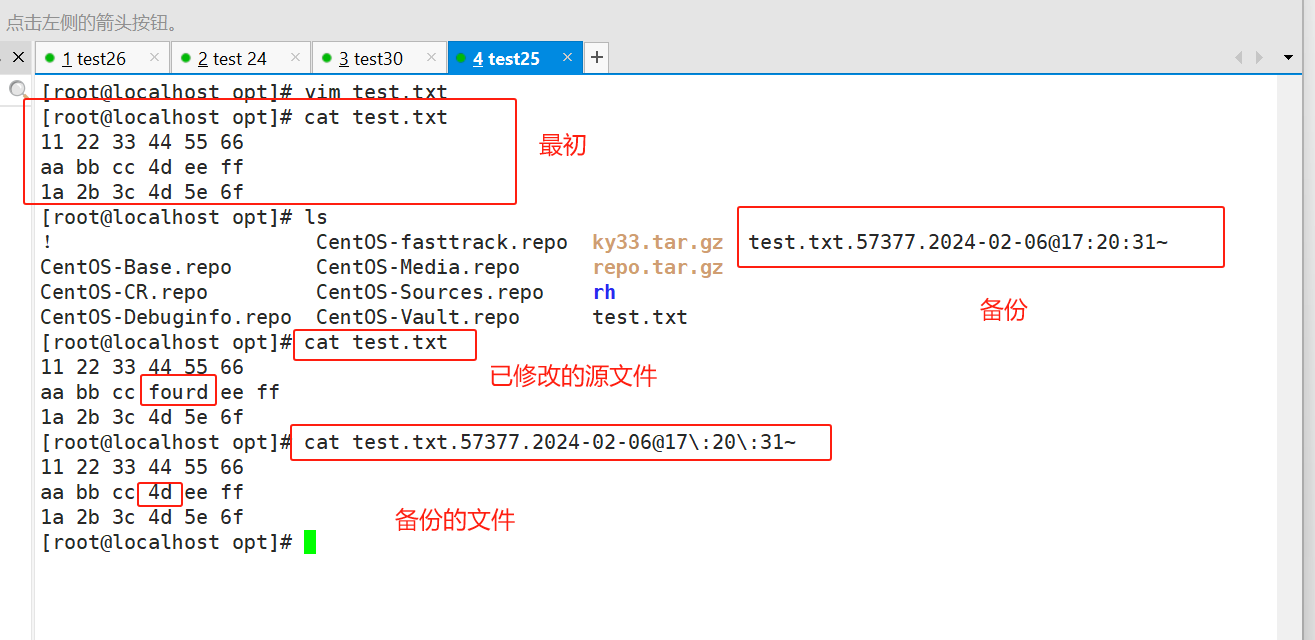
setup 模块
acts 组件是用来收集被管理节点信息的,使用 setup 模块可以获取这些信息 ansible-doc -s setup ansible webservers -m setup #获取mysql组主机的facts信息 ansible dbservers -m setup -a 'filter=*ipv4' #使用filter可以筛选指定的facts信息
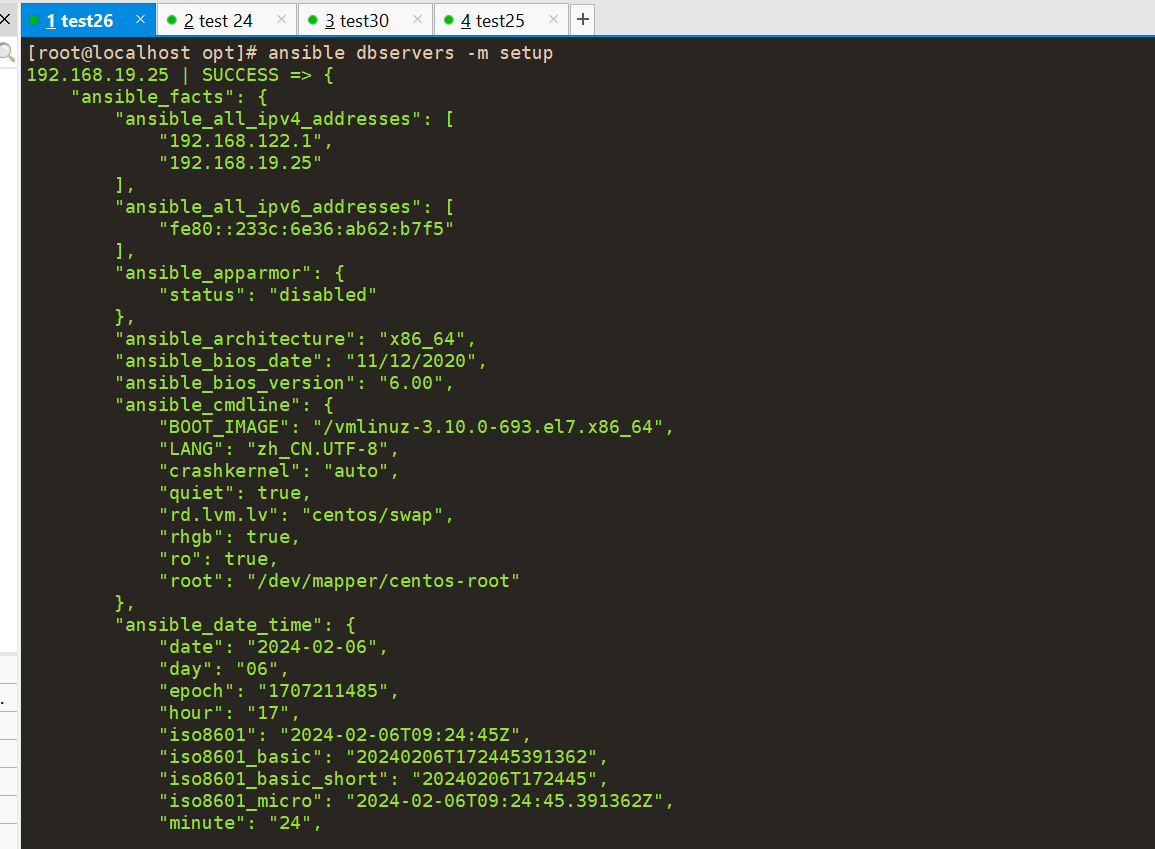
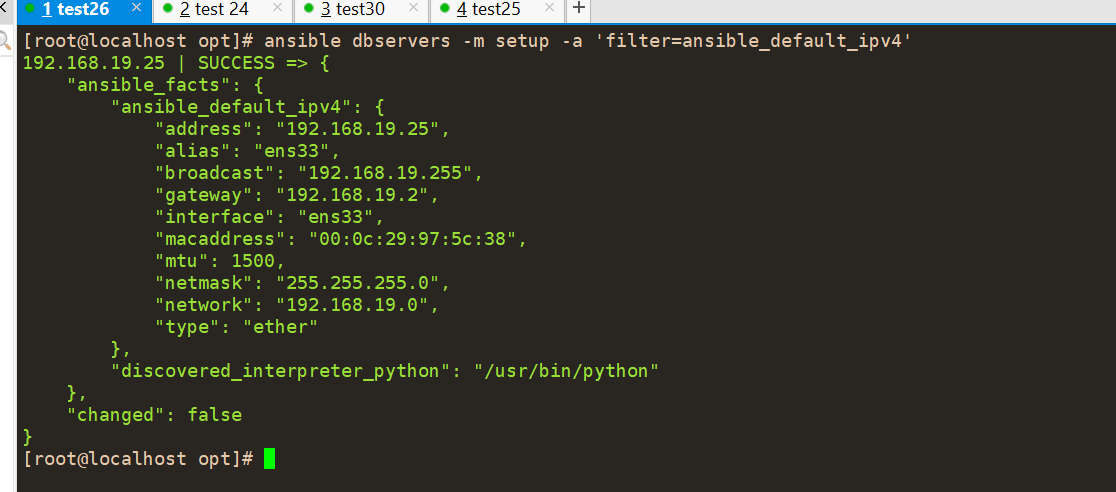
ansible dbservers -m setup -a 'filter=ansible_default_ipv4'
inventory 主机清单 --------- //Inventory支持对主机进行分组,每个组内可以定义多个主机,每个主机都可以定义在任何一个或多个主机组内。 //如果是名称类似的主机,可以使用列表的方式标识各个主机。 vim /etc/ansible/hosts [webservers] 192.168.80.11:2222 #冒号后定义远程连接端口,默认是 ssh 的 22 端口 192.168.80.1[2:5] [dbservers] db-[a:f].example.org #支持匹配 a~f //inventory 中的变量 Inventory变量名 含义 ansible_host ansible连接节点时的IP地址 ansible_port 连接对方的端口号,ssh连接时默认为22 ansible_user 连接对方主机时使用的用户名。不指定时,将使用执行ansible或ansible-playbook命令的用户 ansible_password 连接时的用户的ssh密码,仅在未使用密钥对验证的情况下有效 ansible_ssh_private_key_file 指定密钥认证ssh连接时的私钥文件 ansible_ssh_common_args 提供给ssh、sftp、scp命令的额外参数 ansible_become 允许进行权限提升 ansible_become_method 指定提升权限的方式,例如可使用sudo/su/runas等方式 ansible_become_user 提升为哪个用户的权限,默认提升为root ansible_become_password 提升为指定用户权限时的密码 (1)主机变量 [webservers] 192.168.80.11 ansible_port=22 ansible_user=root ansible_password=abc1234 (2)组变量 [webservers:vars] #表示为 webservers 组内所有主机定义变量 ansible_user=root ansible_password=abc1234 [all:vars] #表示为所有组内的所有主机定义变量 ansible_port=22 (3)组嵌套 [nginx] 192.168.19.24 192.168.19.25 192.168.19.30 [apache] 192.168.80.3[0:3] [webs:children] #表示为 webs 主机组中包含了 nginx 组和 apache 组内的所有主机 nginx apache


 浙公网安备 33010602011771号
浙公网安备 33010602011771号